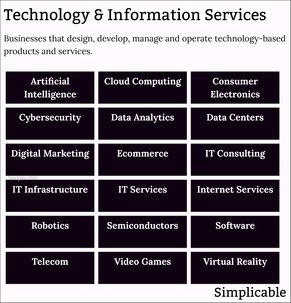
Geographic
The location of people. For example, a restaurant located across the street from a train station that serves 300,000 passengers a day.Demographic
The characteristics of a population such as age, language, gender and ethnicity. For example, a Canadian bank that targets Cantonese and Mandarin speakers with services and promotions in these languages.Customer Needs
Customer needs such as customers who require cushy running shoes because they want to avoid injury when they jog.Customer Preferences
Customer preferences such as people who prefer complex user interfaces with many features and controls. For example, a television designed and promoted to be the most feature-rich on the market with a large remote control with many buttons.Customer Perceptions
Customer perceptions such as the perception that natural materials are higher quality that artificial materials. For example, a premium snowboard with a high quality wood exterior.Lifestyle
A way of life such as work hard, play hard. For example, weekend travel packages for people who have the disposable income and motivation to travel but have little time.Situational
Targeting any common situation that creates a need or that customers can identify with. For example, an ice cream advertisement that targets single people who often enjoy a night alone with a movie or book.Values
Customers with a shared set of values such as a desire to reduce damage to the environment. For example, cosmetics that use harmless naturally biodegradable ingredients that are responsibly sourced and are not tested on animals.Price Sensitivity
Targeting customers based on their willingness to pay for a particular product or service. For example, a product designed to be the least expensive on the shelves.Business Segments
Business-to-business marketing may also identify segments based on shared characteristics of businesses. For example, a software service that targets small retailers with limited information technology capabilities.Market Segment vs Target Market
A target market is the overall set of customers for a marketing offer. It is possible for a firm to target their total addressable market. Alternatively, they may identify one or more market segments as a target market.Market Segment vs Microsegment
A microsegment is a small market segment based on highly specific customer characteristics. For example, an ecommerce company that sells thousands of products might target promotions based on data about millions of customers. Such promotions might be targeted to individuals or relatively small segments of a few hundred people. This typically needs to be automated to be effective.Market Segmentation vs Positioning
Market segments are used to identify your customers. Positioning is the process of developing brands, products, services and messages that appeal to your customers such that they stand out in a crowded market. In other words, positioning is the process of crafting offers so that they are attractive to your market segments.Market Segmentation vs Mass Marketing
Mass marketing is any marketing strategy that is aimed at an entire market. In other words, it is marketing that doesn't use market segmentation. This can be done when you dominate the market with products with broad appeal. For example, a brand of sportswear with high market share may run advertising campaigns designed to reach a high percentage of the population of nation. Such advertising may do little more than seek to associate a positive emotion with the brand to establish and maintain brand recognition.| Overview: Market Segmentation | ||
Type | ||
Definition (1) | A criteria that is used to identify a target market or target audience. | |
Definition (2) | The identification of groups of people with common characteristics to customize marketing efforts such as product development, distribution, promotion, pricing and sales. | |
Related Concepts | ||





























